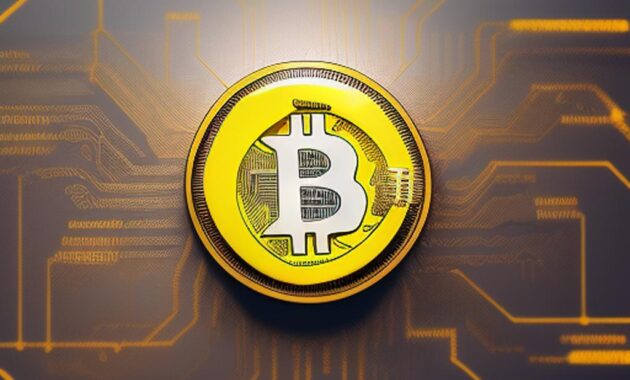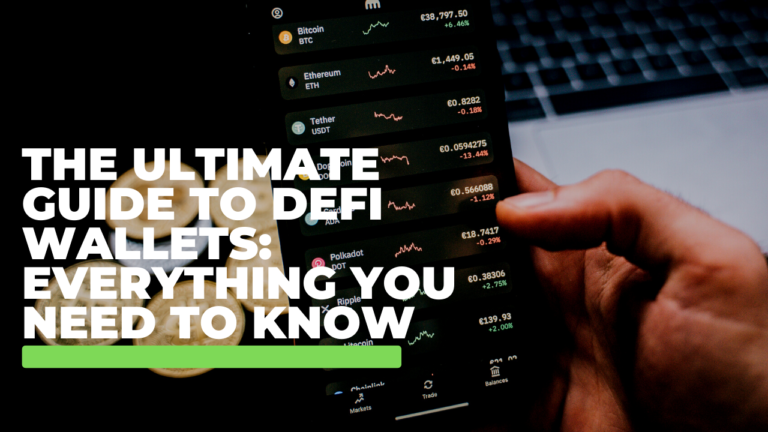Are you wondering what Bitcoin is and how it works? Are you curious about its history, uses, and potential for investment? You’re not alone. Bitcoin has become one of the most popular cryptocurrencies in the world, with a rich history and a complex system. This guide will take you through everything you need to know about Bitcoin, from its inception to its current state and future prospects.

What is Bitcoin?
Bitcoin is a decentralized digital currency, also known as a cryptocurrency. It was created in 2009 by an anonymous developer or group of developers under the pseudonym Satoshi Nakamoto. Bitcoin is not controlled by any central authority, government, or financial institution. Instead, it relies on a decentralized network of users to verify transactions and maintain the blockchain ledger.
Bitcoin transactions are recorded on a public digital ledger called the blockchain. It is a distributed database that stores all transactions made with Bitcoin. The blockchain is secured by cryptography, which makes it virtually impossible to hack or tamper with.
How Bitcoin Works?
Bitcoin works by using a decentralized network of users to verify transactions and maintain the blockchain. When someone sends Bitcoin to another person, the transaction is broadcasted to the network. Miners then pick up the transaction and verify it by solving complex mathematical problems. Once the transaction is verified, it is added to the blockchain ledger.
Bitcoin mining is the process of verifying transactions and adding them to the blockchain. Miners are rewarded with new bitcoins for their work. The mining process involves solving complex mathematical problems, which requires a lot of computing power. As more miners join the network, the mining difficulty increases, making it harder to mine bitcoins.
The History of Bitcoin
Bitcoin was first introduced to the public in 2009 by Satoshi Nakamoto. The whitepaper titled “Bitcoin: A Peer-to-Peer Electronic Cash System” was published on Bitcoin.org. The first Bitcoin transaction was made on January 12, 2009, when Satoshi Nakamoto sent 10 bitcoins to Hal Finney, a computer programmer.
In the early days, Bitcoin had very little value. It wasn’t until 2010 that the first Bitcoin exchange, Mt. Gox, was launched. The exchange allowed people to buy and sell bitcoins for other currencies. The first real-world Bitcoin transaction was made in 2010 when a programmer named Laszlo Hanyecz bought two pizzas for 10,000 bitcoins.
Bitcoin’s value began to rise in 2013, reaching a high of $1,000 per bitcoin. However, the price crashed in 2014, leading to a period of volatility and uncertainty. Bitcoin’s value started to rise again in 2017, reaching an all-time high of nearly $20,000 per bitcoin.
The Advantages of Bitcoin
Bitcoin has several advantages over traditional currencies, including:
- Decentralization: Bitcoin is not controlled by any central authority or government, making it immune to government interference or manipulation.
- Privacy: Bitcoin transactions are pseudonymous, which means that users can send and receive bitcoins without revealing their identity.
- Security: The blockchain ledger is secured by cryptography, making it almost impossible to hack or tamper with.
- Low transaction fees: Bitcoin transaction fees are generally lower than traditional banking fees.
- Global accessibility: Bitcoin can be sent and received anywhere in the world, making it ideal for international transactions.
The Risks of Bitcoin
Bitcoin also has several risks, including:
- Volatility: Bitcoin’s value can fluctuate rapidly, making it a risky investment.
- Regulation: Bitcoin is still largely unregulated, which can lead to uncertainty and instability.
- Security: While the blockchain ledger is secure, Bitcoin exchanges and wallets can be vulnerable to hacking or malware.
- Adoption: Despite its growing popularity, Bitcoin is still not widely accepted as a form of payment.
How to Buy Bitcoin
There are several ways to buy Bitcoin, including:
- Cryptocurrency exchanges: You can buy Bitcoin on exchanges like Coinbase, Binance, and Kraken.
- Bitcoin ATMs: Some cities have Bitcoin ATMs where you can buy Bitcoin with cash.
- Peer-to-peer: You can buy Bitcoin from other individuals through peer-to-peer marketplaces like LocalBitcoins.
- Mining: You can mine Bitcoin by solving complex mathematical problems and adding transactions to the blockchain.
How to Use Bitcoin
Bitcoin can be used to buy goods and services, just like traditional currencies. Many online and brick-and-mortar stores accept Bitcoin as a form of payment. To use Bitcoin, you need a cryptocurrency wallet, which is a digital wallet that stores your private keys. You can send and receive Bitcoin using your wallet address.
The Future of Bitcoin
The future of Bitcoin is uncertain, but it has the potential to disrupt traditional banking and finance. Some experts predict that Bitcoin will become a mainstream currency in the future, while others believe that it will remain a niche investment.
Bitcoin’s main challenge is adoption. While its popularity is growing, it is still not widely accepted as a form of payment. Governments and financial institutions are also wary of Bitcoin, which could lead to increased regulation and uncertainty.
Conclusion
Bitcoin is a decentralized digital currency that has the potential to disrupt traditional banking and finance. While it has several advantages over traditional currencies, it also has several risks. Bitcoin’s future is uncertain, but it has the potential to become a mainstream currency in the future. If you’re interested in buying or investing in Bitcoin, it’s important to do your research and understand the risks involved.












+ There are no comments
Add yours